Herbalists, like jaguars if they are fine, the environment is too
31 de Enero de 2023
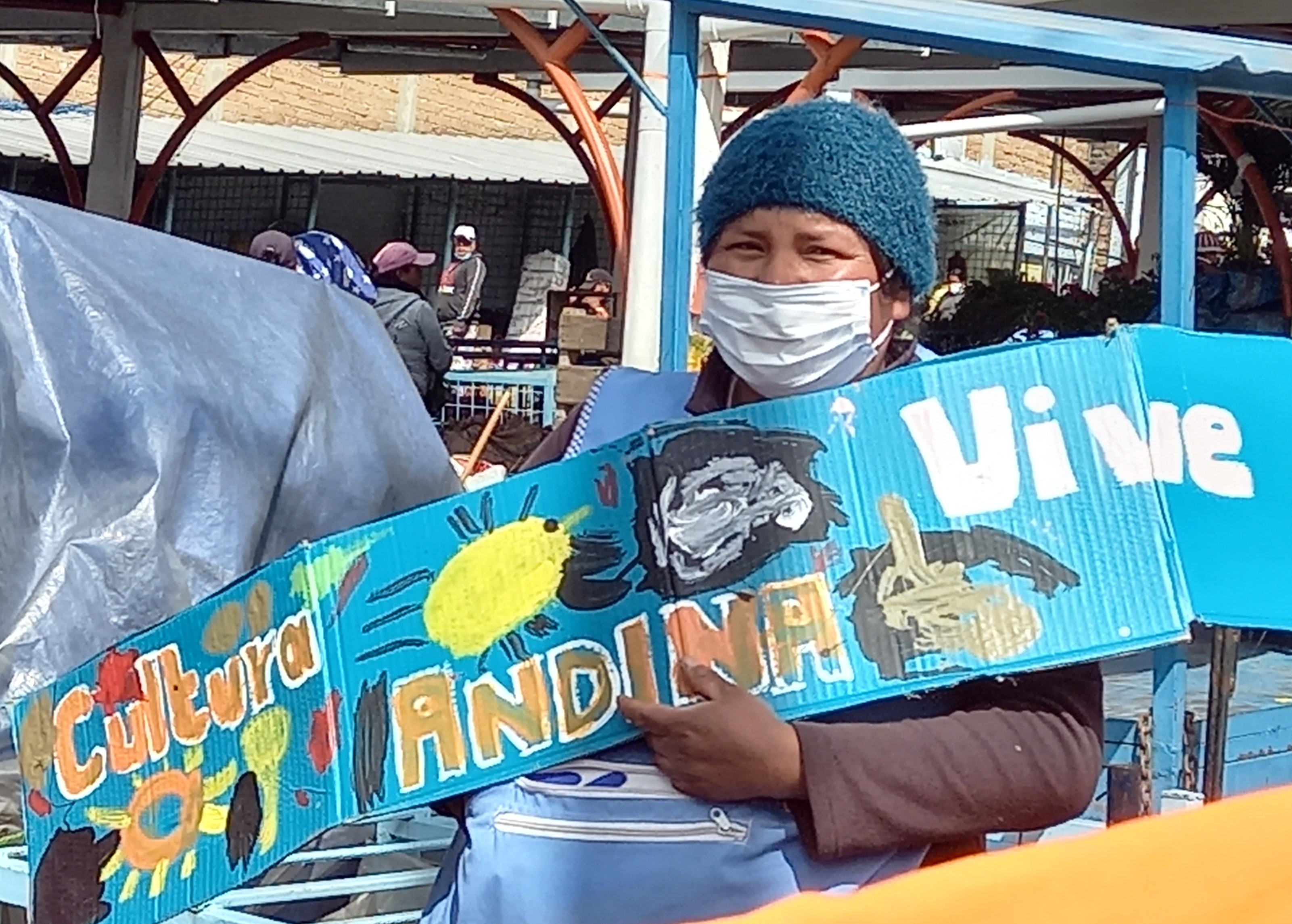
Verónica Minaya, Medicinal herb collector.
During 2022, together with herbalists, students, and community mediators we were immersed in the May 1st Central Platform Market to unravel the complexity of processes, elements, and actors that make up this wholesale market of medicinal plants in Quito. In our first blog, we shared early intuitions resulting from the first stages of this immersion. After several months of co-creating solutions, prototyping, deliberating, and strengthening an open and affective collaboration network, 31 ideas were designed, of which 5 became functional prototypes and one is in experimentation phase. This participatory process, called Innovation Minga, was summarized in a video and a report in which we scrutinized the problems, their potential solutions and horizons. On this occasion, we share new findings, reflections and lessons learned through this journey.
The extinction of this trade would bring consequences at several levels
Valuing the work of medicinal plant producers, a trade at risk of extinction, means more than appreciating its cultural and heritage contribution. It implies acknowledging the interconnections between herbalists and diverse ecosystems, ancestral knowledge, extended families and community networks participating in this economic activity, and lastly, the market, an urban space under dispute and pressure. In a nutshell, the possible disappearance of medicinal herb trade would compromise these four elements as well.
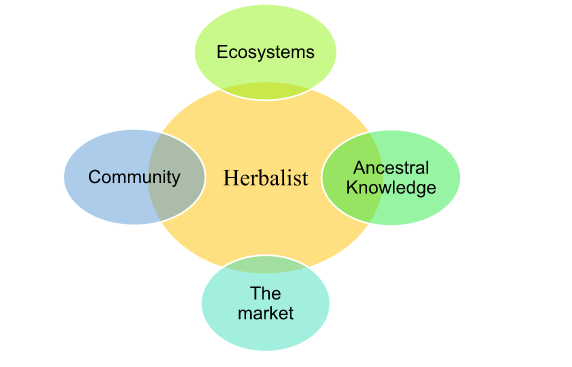
Jaguars are classified as “umbrella species” because they depend on vast amounts of land to subsist, thereby, its own conservation contributes to an entire associated ecosystem. Such metaphor could also be applied to these traders. Herbalists, like jaguars if they are fine, the environment is too.
Guardians of ecosystems, markets, knowledge, and community
Over one hundred species of medicinal herbs are sold in this important wholesale market. These are obtained by cultivating them in communal or private orchards or, in the case of wild plants, by harvesting them from hills, forests and ravines. Harvesting wild medicinal plants involves penetrating the forests on foot by mechanically clearing the weeds and invasive species that threaten biodiversity and flora, to then, reach the medicinal plants, prune them, favoring their reproduction, and finally, carry them in bundles back to the city.
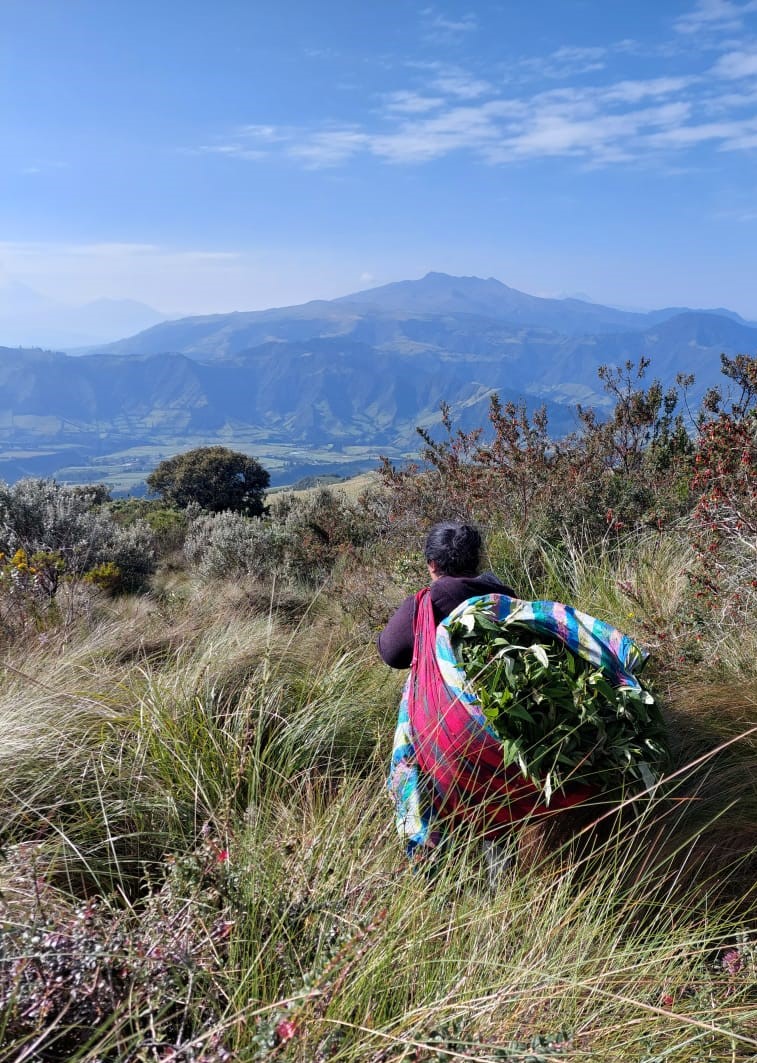
María Casa, medicinal herb collector and vendor.
Medicinal plant harvesters’ become guardians of biodiversity as they witness threats to these communal, public or private areas in their daily activities.
“Yes, it has become more difficult, private lands have become urbanizations and there are less places where we can collect herbs. Landowners no longer allow strangers to enter the natural areas. In the past, a landowner would tell me << go ahead and collect the herbs because they grow back stronger>>. But now, people go to ravines to dump their waste there. Now, they fence off their properties. Besides, their large land properties have become cattle ranches”. Marta Lucía López, wild medicinal plant collector.
They carry out empirical monitoring of the state of the ravines and hills, but this valuable information is not received by any institution with jurisdiction in the conservation of these areas. Could this ecosystem monitoring role be recognized institutionally? Could a certification facilitate their work and reduce restrictions placed by national park guards who apply unwritten rules due to unawareness that herbalists, far from harming ecosystems, protect them?
Reproducers of ancestral knowledge and life
Knowing their way through trails, agricultural and lunar cycles, dialoguing with the spirits of ancestors, mountains, and plants, interpreting dreams for foresight, identifying plants, having their permission to cure their clients with their benefits, are ancestral practices not learned overnight. Herbalists, therefore, are reproducers of an ancestral culture, which survives in the city, among indigenous people and mestizos who continue to use medicinal plants to keep their health and life in balance.
Knowledge is linked to daily practices, thus its conservation, implies conserving culture and life.
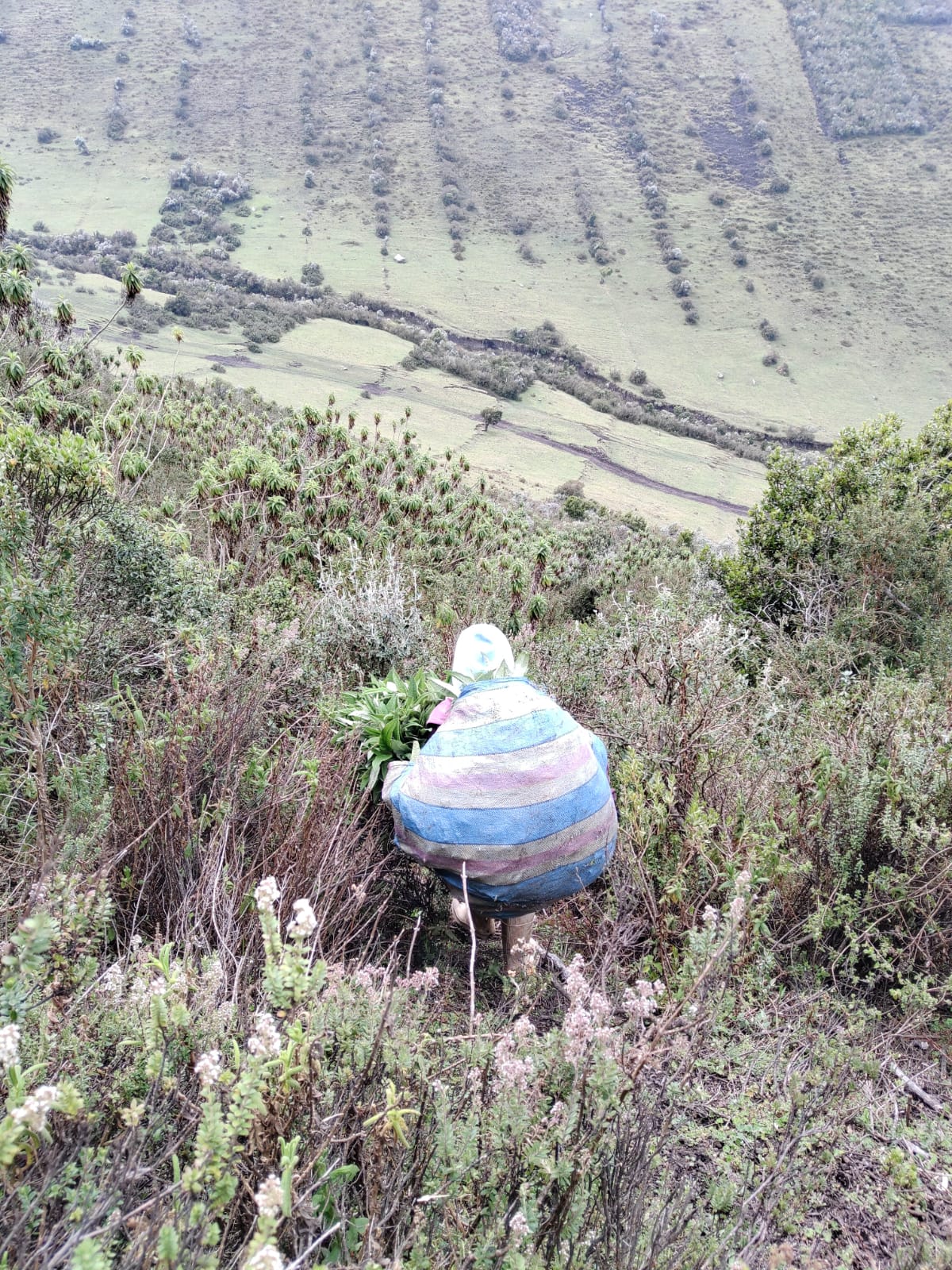
María Florentina Simbaña, the “Piper plant lady”, recollecting at 3810 m.a.sl.
The need for generational handover is evident, but while this trade remains to be vulnerable and precarious, it will not occur. It is understandable for herbalists´ children to look for other fairer and less strenuous opportunities. In the meanwhile, the alliance with institutions such as the City Museum and the United Nations Development Program (UNDP) has contributed to make this trade visible and medicinal plant producers have gained greater relevance. They have been protagonists in the “Territories that Heal” exhibition, reclaimed the city streets with fairs, gotten media coverage and participated in the Innovation Minga with young students from the National Polytechnic School in a genuine knowledge exchange to collaboratively develop solutions. When searching for strategies for knowledge preservation, new knowledge is produced.
The Market
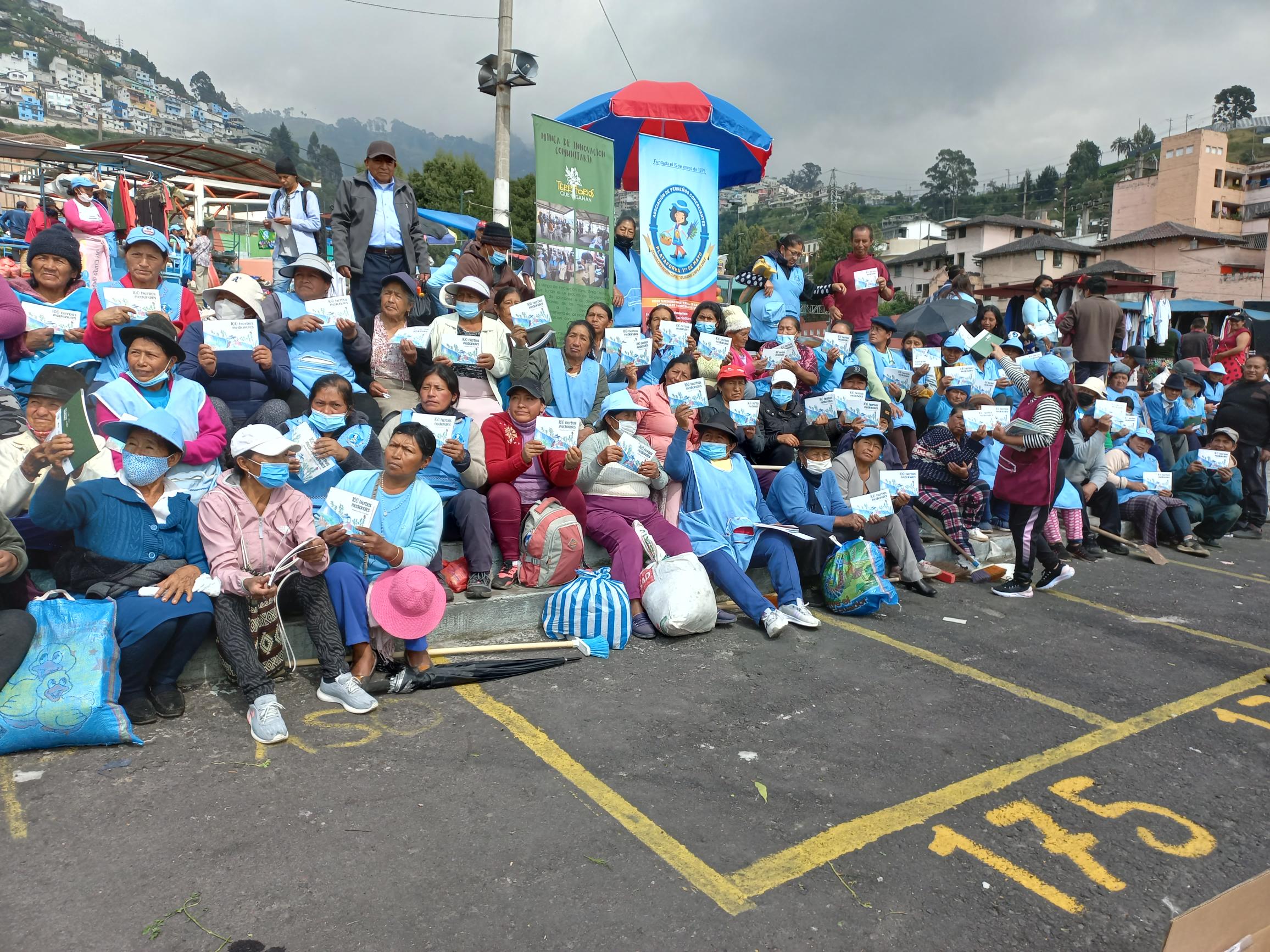
The market, herbalists show the “100 Medicinal Plants” catalog.
The market, is therefore, the place where knowledge, biodiversity, ancestral medicine practices converge to become the epicenter where the commons is produced and cherished. The defense of this space involves maintaining ties with customers, receiving local government support for infrastructure reforms, promoting its self-management and cooperative model, and regulating the spread of large supermarket chains that change consumption patterns in detriment of popular markets.
When prototyping solutions for the market during the Minga, we tackled the issue of lost surplus production and raised the possibility of composting and/or dehydrating plants. Besides reducing a popular market´s stigma as a “dirty” place, the use of organic waste could improve their livelihoods. One important lesson we learned is that prototypes trigger questions about the management model required to run a solution. It became evident that testing pilots is essential as technological artifacts only become solutions when built on organizational process, in this case, a cooperative one. Prototyping, therefore, helped us raise key questions, such as, how much waste does the market generate? What are the characteristics of that waste? What are the barriers to waste separation? This information is not available for markets in Quito, and we plan to collect this data to then, continue co-designing and piloting management models.
The Community
Behind each herbalist lies a community. Her practice, although solitary at times, is founded, on a network of people, family members and community members who participate in the production, distribution, and consumption of medicinal herbs. Therefore, promoting herbalists´ livelihoods impact an entire network of collaborators. We have learned that subsistence economies are more fluid and broader than the concept of “household income”, which assumes nuclear family structures and as a general reality. If the livelihoods of these women improve, an entire community also benefits.
Horizons
Currently, we are experimenting an irrigation system in two orchards which aims to reduce the physical strain of carrying buckets to water crops and will be documenting results. On the other hand, we plan to disseminate the catalog of medicinal plants in educational activities as well as to attract customers. Thirdly, we will put on the table of local government actors, the georeferenced map of the territories that heal, including collection ecosystems to bring to their attention several threats to ecosystems that have been identified by harvesters. Stay tuned for further updates on this journey.
For further information or collaboration, please contact: paulina.jimenez@undp.org

 Locations
Locations




